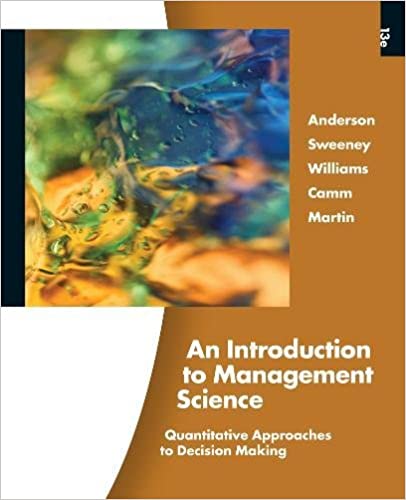
An Introduction to Management Science 13th Edition by David Anderson,Dennis Sweeney ,Thomas Williams ,Jeffrey Camm, Kipp Martin
Edition 13ISBN: 978-1439043271
An Introduction to Management Science 13th Edition by David Anderson,Dennis Sweeney ,Thomas Williams ,Jeffrey Camm, Kipp Martin
Edition 13ISBN: 978-1439043271 Exercise 36
The Kartick Company is trying to determine how much of each of two products to produce over the coming planning period. There are three departments, A , B and C , with limited labor hours available in each department. Each product must be processed by each department and the per-unit requirements for each product, labor hours available, and per-unit profit are as shown below. 
A linear program for this situation is as follows:
Let
Mr. Kartick (the owner) used trial and error with a spreadsheet model to arrive at a solution. His proposed solution is x 1 = 75 and x 2 = 60, as shown below in Figure 2.24. He said he felt his proposed solution is optimal.
Is his solution optimal? Without solving the problem, explain why you believe this solution is optimal or not optimal.
FIGURE 2.24 MR. KARTICK's TRIAL-AND-ERROR MODEL

A linear program for this situation is as follows:
Let

Mr. Kartick (the owner) used trial and error with a spreadsheet model to arrive at a solution. His proposed solution is x 1 = 75 and x 2 = 60, as shown below in Figure 2.24. He said he felt his proposed solution is optimal.
Is his solution optimal? Without solving the problem, explain why you believe this solution is optimal or not optimal.
FIGURE 2.24 MR. KARTICK's TRIAL-AND-ERROR MODEL

Explanation
It is given that K Company is determinin...
An Introduction to Management Science 13th Edition by David Anderson,Dennis Sweeney ,Thomas Williams ,Jeffrey Camm, Kipp Martin
Why don’t you like this exercise?
Other Minimum 8 character and maximum 255 character
Character 255


